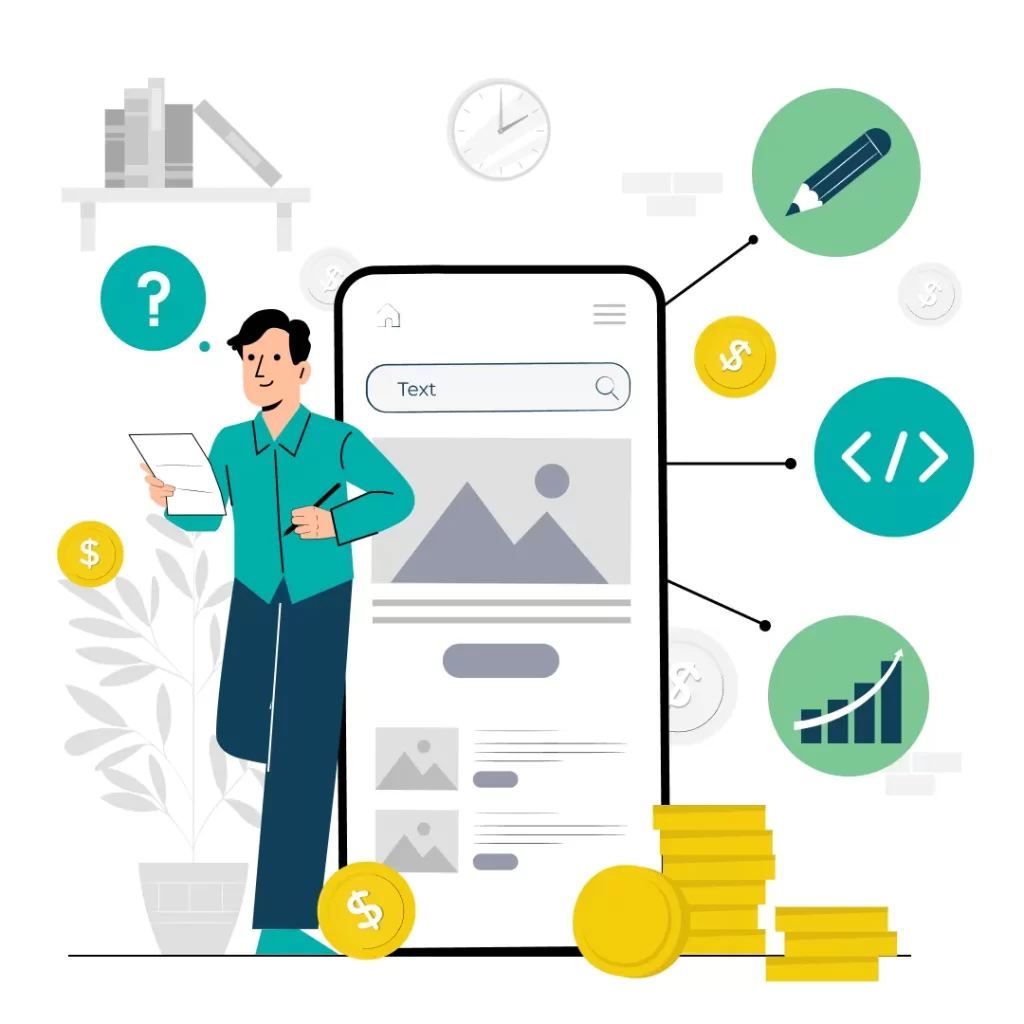Legacy systems accumulate technical debt through shortcuts, workarounds, and deferred improvements, creating hidden costs that drain business resources. New CTOs inheriting these systems often struggle to quantify the true financial impact and build compelling modernisation business cases.
This guide is part of our comprehensive modernization guide, providing proven methodologies for assessing technical debt using automated tools, calculating accurate ROI for modernisation projects, and translating technical metrics into business language that resonates with stakeholders.
What Is Technical Debt and Why Does It Matter?
Technical debt represents the implied cost of choosing quick solutions over better approaches that take longer to implement. In legacy systems, this accumulates as shortcuts, workarounds, and deferred improvements that increase maintenance costs, reduce developer productivity, and create performance bottlenecks while limiting business agility and competitive advantage.
Every minute spent on not-quite-right code counts as interest on that debt, compounding the business cost through reduced developer efficiency, slower feature delivery, and increased system maintenance overhead. Architecture technical debt consistently appears as the most damaging and far-reaching type in surveys, analyst reports, and academic studies.
Organisations that fail to manage their technical debt properly can expect higher operating expenses, reduced performance, and a longer time to market. According to Gartner, companies that manage technical debt effectively achieve at least 50% faster service delivery times to the business.
Developer morale suffers significantly under technical debt burden. Research indicates 76% of developers report that paying down technical debt affects their morale and job satisfaction, creating retention challenges that compound the problem through knowledge loss and increased recruiting costs.
How Do You Quantify Technical Debt in Legacy Systems?
Technical debt quantification uses automated code analysis tools to calculate metrics like Technical Debt Ratio (TDR), which compares remediation effort to development effort as a percentage. Tools like CAST Software, SonarQube, and vFunction analyse code complexity, architectural issues, and maintenance requirements to provide standardised measurements.
The Technical Debt Ratio measures the amount spent on fixing software compared to developing it. A minimal TDR of less than five percent indicates healthy code quality, though many organisations operate with higher ratios due to accumulated legacy debt.
Modern approaches leverage machine learning to analyse dependency graphs between classes to extract complexity, risk, and overall debt metrics. Machine learning models can accurately assess technical debt levels without prior knowledge, incorporating expert knowledge for nuanced assessments.
Informal indicators include product delays, out-of-control costs, and low developer morale. Implementing continuous monitoring of metrics like code complexity, code churn, and test coverage helps identify potential hotspots before they become major problems.
What Assessment Tools Provide the Best Technical Debt Analysis?
CAST Software leads enterprise-grade architectural analysis, while SonarQube offers open-source code quality scanning. vFunction specialises in AI-powered debt detection, and CodeScene combines version control with quality metrics. Tool selection depends on organisation size, budget, integration requirements, and analysis depth needed.
CAST Software takes a comprehensive approach to technical debt assessment, analysing code quality, architecture, and security vulnerabilities with detailed metrics for complexity, design violations, and risks.
SonarQube provides valuable insights into code smells, bugs, vulnerabilities, and code duplication with extensive language support making it suitable for diverse technology stacks.
vFunction uses AI-powered assessment capabilities to uncover architectural debt in complex legacy systems.
For limited budgets, SonarQube provides excellent starting capabilities. Enterprise environments benefit from CAST Software’s comprehensive reporting. Complex legacy systems require vFunction’s AI-powered approach.
How Do You Calculate ROI for Legacy Modernisation Projects?
ROI calculation compares modernisation costs against quantified benefits including reduced maintenance expenses, improved developer productivity, enhanced system performance, and new business capabilities. The formula considers baseline TCO, modernisation investment, projected savings, risk mitigation value, and opportunity cost recovery.
Most organisations require 15-25% ROI with 2-3 year payback periods to justify modernisation investment. Establishing baseline costs involves documenting current maintenance expenses, developer time spent on legacy support, infrastructure costs, and opportunity costs from delayed features.
Revenue gains often exceed cost savings. Enhanced system agility enables faster feature delivery, improved customer experience, and competitive advantages generating new revenue streams. Calculate time saved using hours per week × engineers × weeks per month.
Risk mitigation value represents another crucial ROI component. Legacy systems expose organisations to security vulnerabilities, compliance failures, and operational disruptions with significant financial implications. Quantifying potential outages, security breaches, and regulatory penalties helps justify modernisation investments.
What Are the Hidden Costs of Maintaining Legacy Systems?
Hidden costs include lost business opportunities due to system limitations, reduced developer productivity from complex codebases, increased security vulnerability exposure, compliance requirement failures, and competitive disadvantage from slower feature delivery. These indirect expenses often exceed direct maintenance costs, with studies showing 20-40% additional impact from decreased team efficiency, customer experience degradation, and strategic initiative delays.
The annual cost of the top 10 legacy systems of the federal government is nearly $337 million according to the US Government Accountability Office.
Developer productivity suffers under legacy burden. IT departments spend more time maintaining old systems rather than focusing on mission-critical projects. This compounds as skilled developers become frustrated and seek opportunities elsewhere.
Security risks multiply with system age. Old platforms pose higher cybersecurity risks without automatic updates, exposing organisations to data breaches and compliance violations. Security incident costs often far exceed modernisation investment.
How Do You Build a Compelling Business Case for Modernisation?
Compelling business cases translate technical debt metrics into financial impact statements, present clear ROI calculations with conservative projections, include risk mitigation benefits, and demonstrate competitive advantages. Structure presentations with executive summary, problem quantification, solution overview, financial analysis, implementation timeline, and success metrics.
The business case serves as a business proposal for investment approval. Stakeholders worry about: Why do anything? Why this approach? Why now? Address each concern with data-driven arguments.
Comprehensive assessment provides management with accurate, quantified data for investment decisions. Frame modernisation with outcomes that clarify the “why” for everyone involved.
Data-driven plans address stakeholder concerns more effectively than technical arguments. Over 90% of IT decision-makers view modernisation as essential for digital transformation. However, 97% expect pushback, highlighting the importance of thorough preparation.
What Strategies Work for Convincing Stakeholders and Boards?
Successful stakeholder communication uses concrete financial data, industry benchmarks, and peer organisation examples to demonstrate modernisation necessity. Present technical debt as business risk using metrics like system downtime costs, security breach exposure, and competitive response delays. Include incremental modernisation options with Strangler Pattern implementation to reduce perceived risk while showing clear milestone-based progress and measurable business value delivery.
For comprehensive guidance on selecting the right modernisation approach for your specific situation, explore our complete legacy system modernization guide which covers all available patterns and their business implications.
Address stakeholder concerns through collaborative assessment, acknowledging system value while highlighting improvement opportunities. Stakeholders fear large-scale change since workflows change and roles may be threatened.
Use comprehensive assessment to understand architecture, dependencies, and limitations. Prioritise components based on business value and risk, demonstrating methodical planning rather than wholesale replacement.
Implement incremental approaches through small, manageable increments. The Strangler Pattern enables gradual replacement without disrupting operations, allowing stakeholders to see progress while maintaining stability.
Present concrete examples from peer organisations. Industry benchmarks and case studies provide external validation, demonstrating measurable improvements in efficiency, security, and competitive positioning.
How Do You Track and Report Modernisation Value Over Time?
Value tracking uses baseline technical debt measurements compared against post-modernisation metrics to demonstrate improvement. Monitor maintenance cost reduction, developer productivity gains, system performance improvements, and new business capability delivery. Establish regular reporting with dashboard updates showing progress against ROI projections and milestone achievements.
Develop a detailed roadmap with short-term, medium-term, and long-term goals ensuring each phase is achievable and measurable. Build contingencies into timelines and stay honest about data, even when disappointing.
Platform engineering KPIs include lead time, deployment frequency, developer happiness, change failure rate, and mean time to recover. Track lead time to identify workflow roadblocks and deployment frequency to measure production deployment rates.
Maintain change failure rate under 15% for quality and stability. Create transparent KPI dashboards with realistic expectations. This builds trust and demonstrates continuous value delivery.
FAQ Section
How much does technical debt typically cost businesses annually?
Studies indicate technical debt costs organisations 23-42% of total IT budget through increased maintenance, reduced productivity, and missed opportunities, with average costs ranging from $85-150 per developer per day in decreased efficiency.
Can you measure technical debt without expensive assessment tools?
Yes, basic measurement uses open-source tools like SonarQube, manual code review checklists, and simple metrics like bug fix time, feature delivery speed, and developer survey data to establish baseline debt levels.
What’s the minimum ROI threshold for justifying legacy modernisation?
Most organisations require 15-25% ROI with 2-3 year payback periods, though this varies by industry, risk tolerance, and strategic importance of affected systems to business operations.
How do you handle resistance from developers who built the legacy systems?
Address concerns through collaborative assessment, acknowledge system value while highlighting improvement opportunities, involve developers in solution design, and emphasise career development benefits from modern technology exposure.
What happens if modernisation ROI projections aren’t realised?
Implement milestone-based tracking with course correction opportunities, maintain conservative projections with buffer margins, and establish clear success criteria with alternative approaches if initial strategies underperform.
How do you prioritise multiple legacy systems for modernisation?
Use risk-weighted scoring combining technical debt levels, business criticality, maintenance costs, and strategic importance to create prioritised modernisation roadmap with resource allocation optimisation.
Should SMB companies use the same assessment approach as enterprises?
SMBs benefit from lighter-weight assessment using open-source tools, simplified ROI calculations, and phased implementation approaches that match resource constraints while delivering measurable business value.
How often should technical debt assessments be performed?
Quarterly assessments for high-change systems, annual comprehensive reviews for stable systems, and immediate assessment when maintenance costs spike or performance degrades significantly below acceptable thresholds.
What’s the difference between refactoring and full system replacement ROI?
Refactoring typically shows 6-12 month payback with 20-40% cost reduction, while replacement requires 12-24 months with 40-70% long-term benefits but higher upfront investment and implementation risk.
How do you account for opportunity costs in modernisation ROI?
Quantify missed revenue from delayed features, calculate competitive disadvantage costs, estimate customer retention impact, and include innovation capability improvement to capture full modernisation value proposition.
What technical debt metrics matter most to executives?
Focus on maintenance cost percentage of IT budget, system downtime frequency and duration, feature delivery velocity, security vulnerability exposure, and competitive response time to market pressures.
How do you validate assessment tool accuracy before major investments?
Conduct pilot assessments on known problem areas, compare tool outputs with manual analysis, validate cost projections against historical data, and test reporting capabilities with stakeholder feedback sessions.
Conclusion
Technical debt assessment and ROI calculation provide the foundation for successful legacy modernisation initiatives. By quantifying debt using proven tools and methodologies, you transform subjective technical concerns into objective business metrics that resonate with stakeholders and secure executive approval.
As outlined in our comprehensive legacy modernization framework, proper assessment forms the critical first step in any successful modernisation journey.
The key to success lies in comprehensive assessment, conservative ROI projections, and systematic tracking of modernisation value over time. Whether using enterprise-grade tools like CAST Software or starting with open-source options like SonarQube, the goal remains the same: building compelling business cases that justify modernisation investments through concrete financial benefits.
Once you’ve established your business case, focus on risk management and security framework implementation and project execution best practices to ensure successful modernisation outcomes.
Start by conducting a thorough assessment of your legacy systems using the frameworks outlined in this guide. Calculate realistic ROI projections that account for both direct savings and hidden costs, then present your findings using business language that addresses stakeholder concerns. With proper planning and execution, legacy modernisation becomes a strategic advantage rather than a necessary evil.












